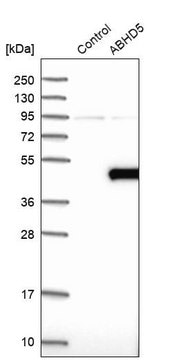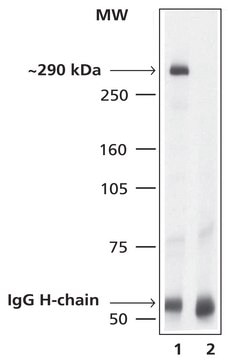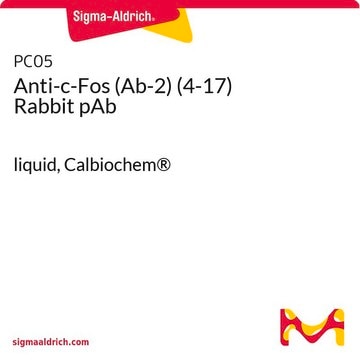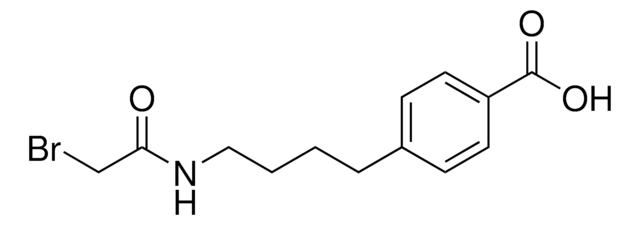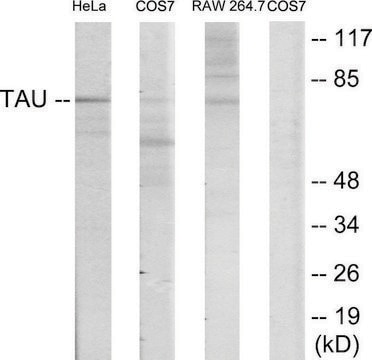ABS1616
Anti-CGI-58 Antibody
serum, from rabbit
Synonym(s):
1-acylglycerol-3-phosphate O-acyltransferase ABHD5 (EC:2.3.1.51), Abhydrolase domain-containing protein 5, Lipid droplet-binding protein CGI-58, Protein CGI-58, CGI-58
About This Item
Recommended Products
biological source
rabbit
Quality Level
antibody form
serum
antibody product type
primary antibodies
clone
polyclonal
species reactivity
mouse
technique(s)
immunocytochemistry: suitable
western blot: suitable
NCBI accession no.
UniProt accession no.
shipped in
dry ice
target post-translational modification
unmodified
Gene Information
mouse ... Abhd5(67469)
General description
Immunogen
Application
Western Blotting Analysis: A representative lot detected recombinant CGI-58, as well as endogenous CGI-58 in differentiated 3T3-L1 adipocytes, and 3T3-L1 preadipocytes stably expressing ectopic perilipin A or perilipin B (Subramanian, V., et al. (2004). J. Biol. Chem. 279(40):42062-42071).
Immunocytochemistry Analysis: A representative lot detected CGI-58 in 3T3-L1 adipocytes, 3T3-L1 preadipocytes stably expressing perilipin A (Subramanian, V., et al. (2004). J. Biol. Chem. 279:42062-42071).
Western Blotting Analysis: A representative lot detected CGI-58 in mouse cardiac muscle, liver, white and brown adipose tissue (Zierler, K.A., et al. (2013). J. Biol. Chem. 288(14):9892-9904).
Western Blotting Analysis: A representative lot detected CGI-58 in in mouse OP9 adipocytes and brown adipose tissue (Skinner, J.R., et al. (2013). Adipocyte. 2(2):80-86).
Signaling
Signaling Neuroscience
Quality
Western Blotting Analysis: A 1:1,000 of this antibody detected CGI-58 in 10 µg of differentiated 3T3-L1 adipocytes cell lysate.
Target description
Physical form
Storage and Stability
Handling Recommendations: Upon receipt and prior to removing the cap, centrifuge the vial and gently mix the solution. Aliquot into microcentrifuge tubes and store at -20°C. Avoid repeated freeze/thaw cycles, which may damage IgG and affect product performance.
Other Notes
Disclaimer
Not finding the right product?
Try our Product Selector Tool.
wgk_germany
WGK 1
Certificates of Analysis (COA)
Search for Certificates of Analysis (COA) by entering the products Lot/Batch Number. Lot and Batch Numbers can be found on a product’s label following the words ‘Lot’ or ‘Batch’.
Already Own This Product?
Find documentation for the products that you have recently purchased in the Document Library.
Our team of scientists has experience in all areas of research including Life Science, Material Science, Chemical Synthesis, Chromatography, Analytical and many others.
Contact Technical Service